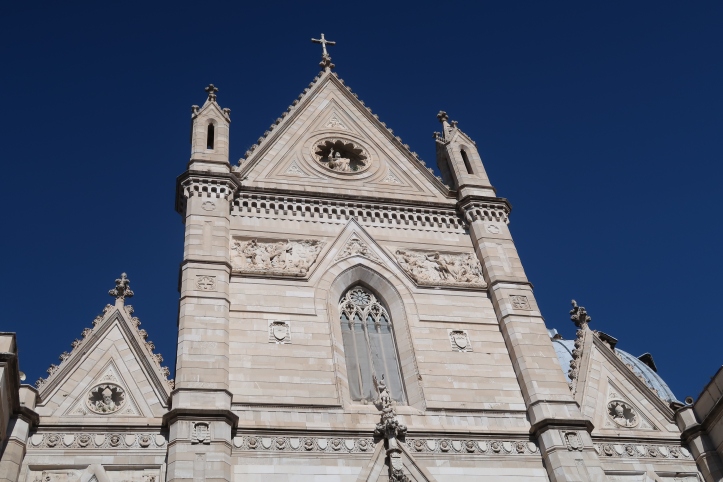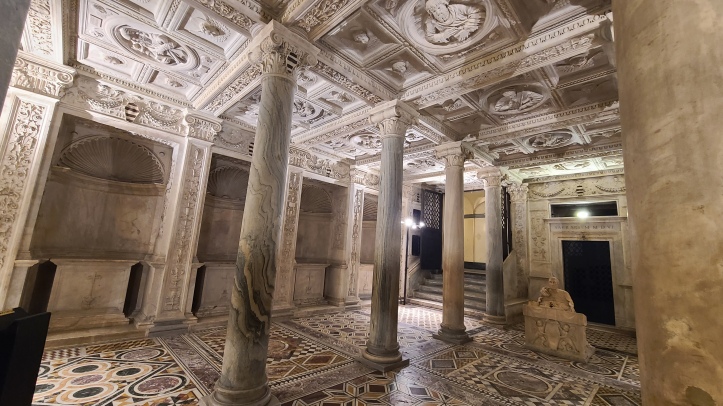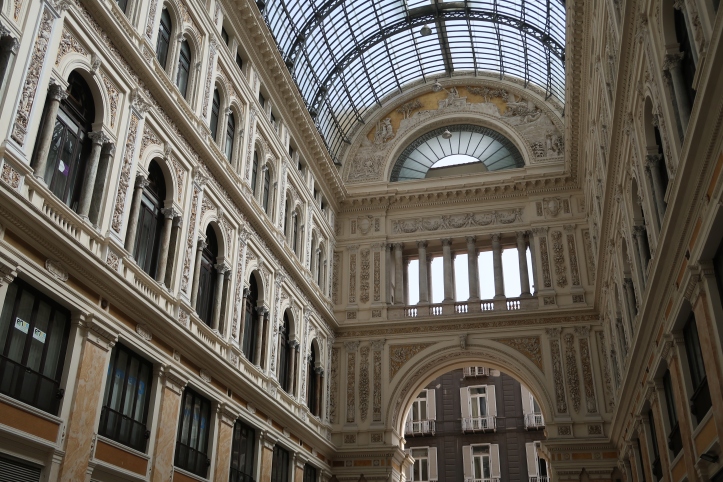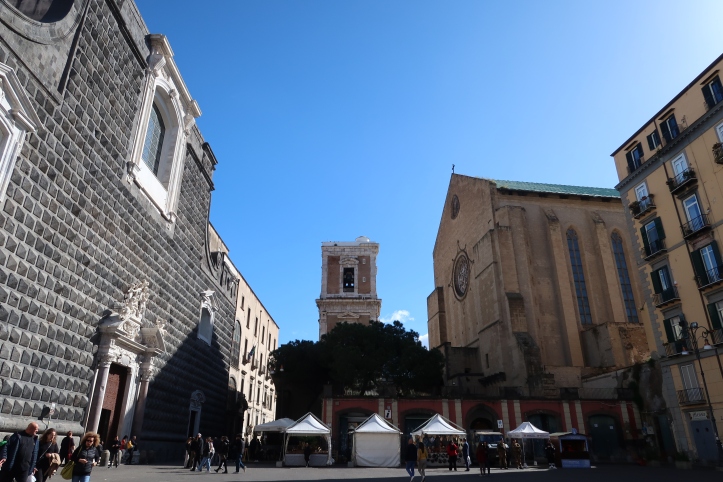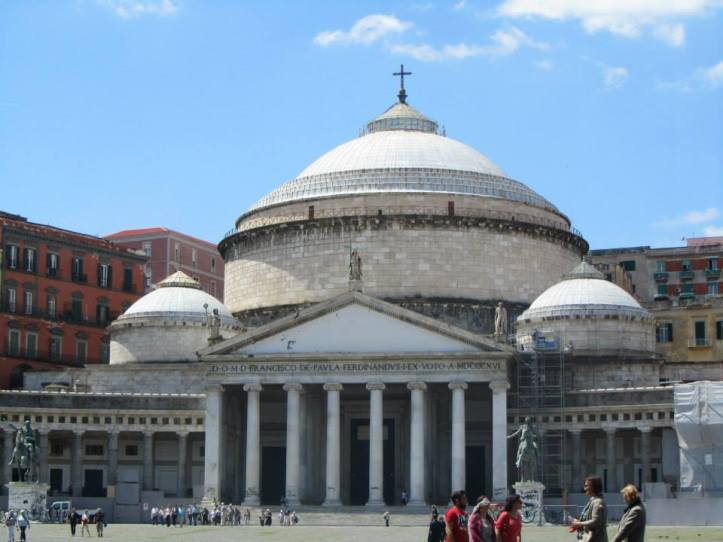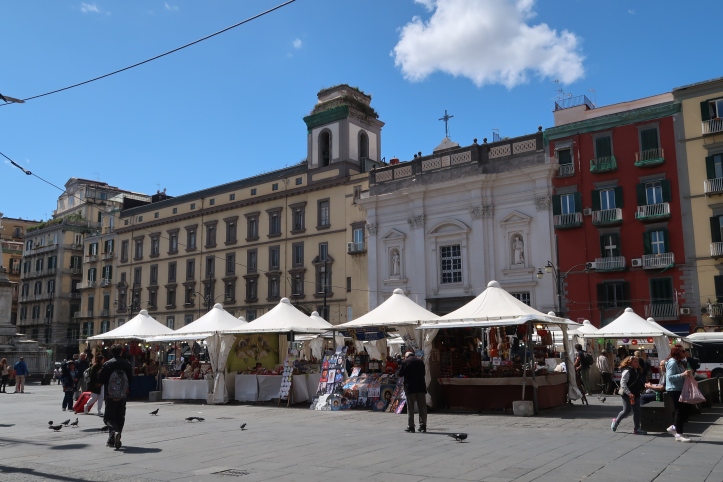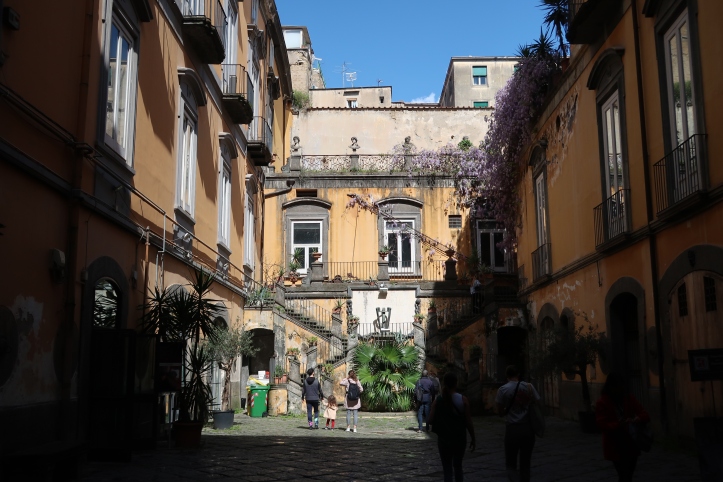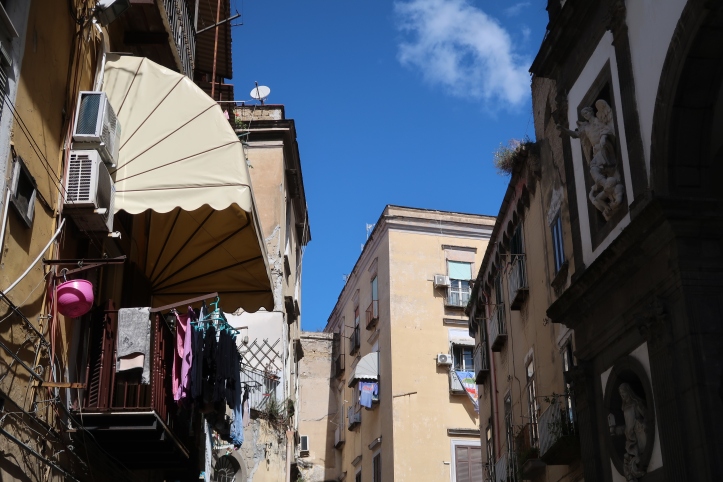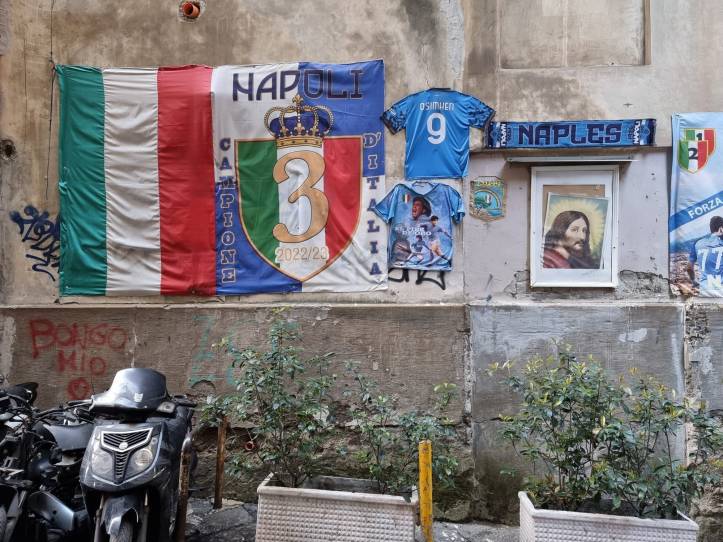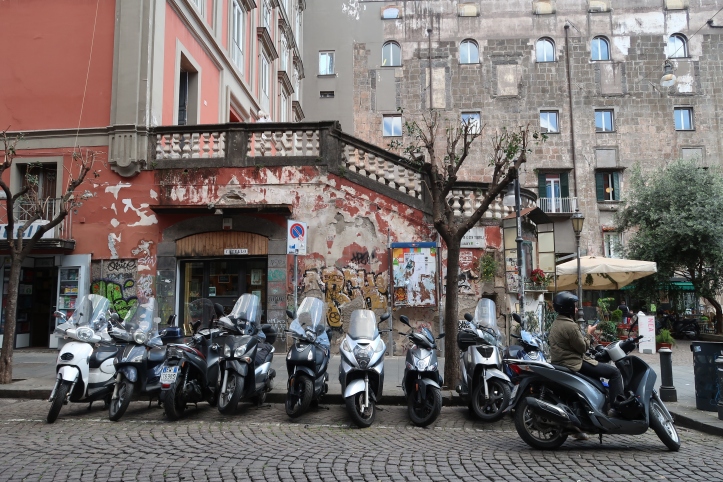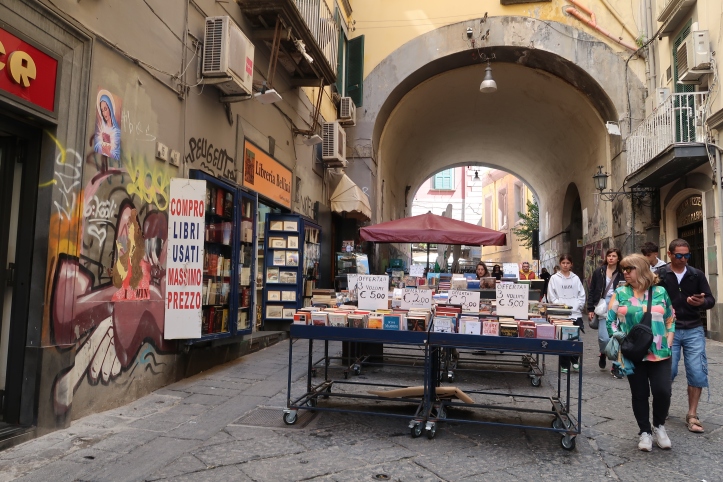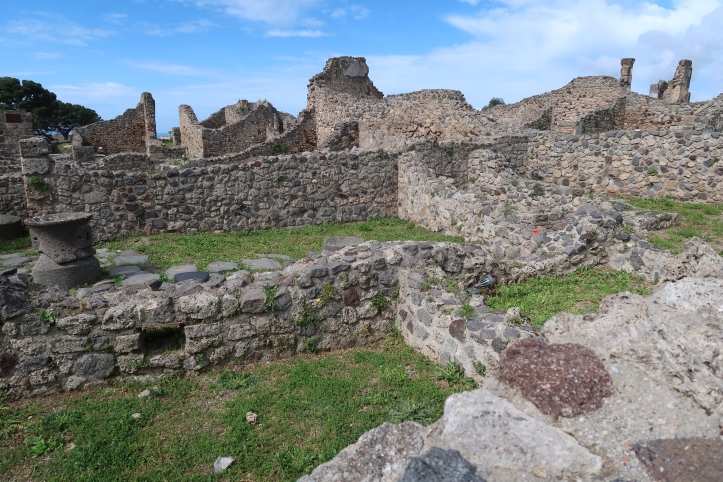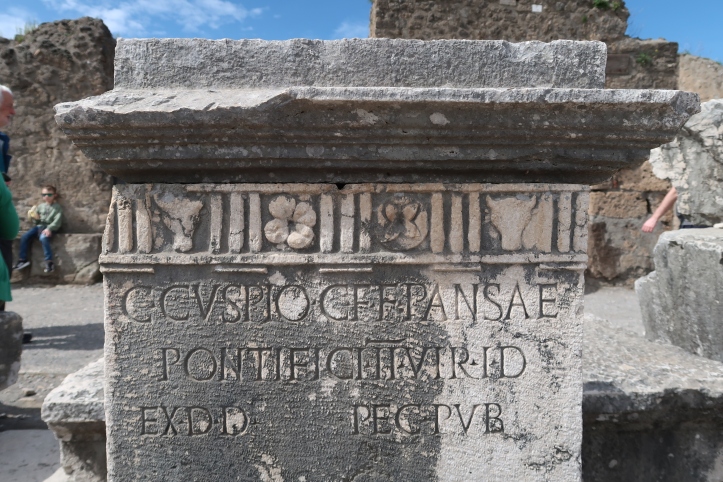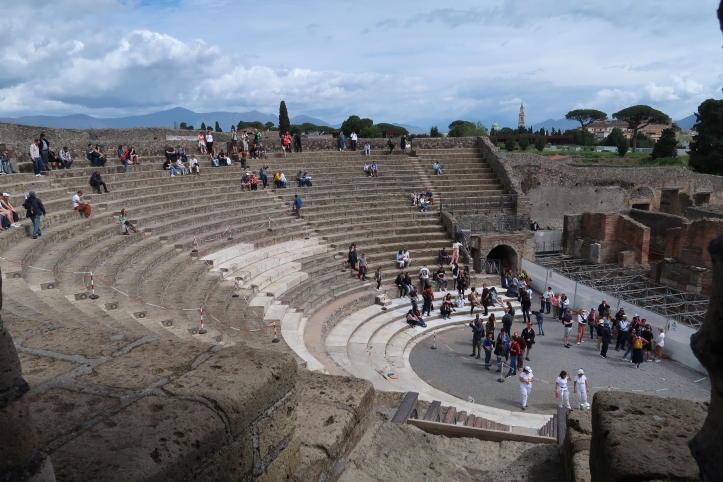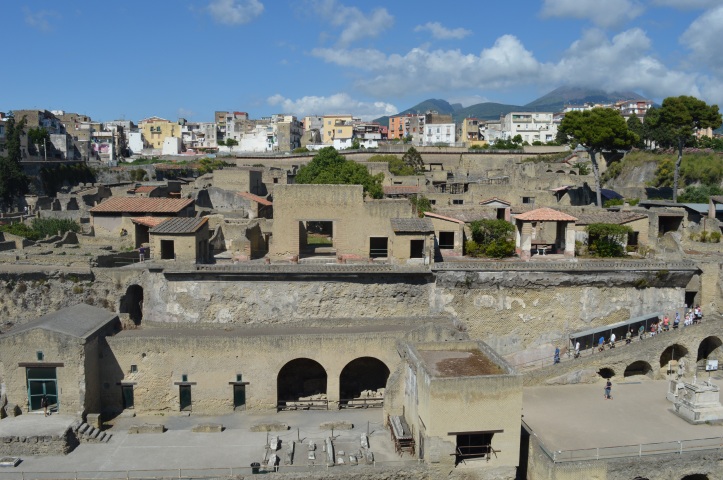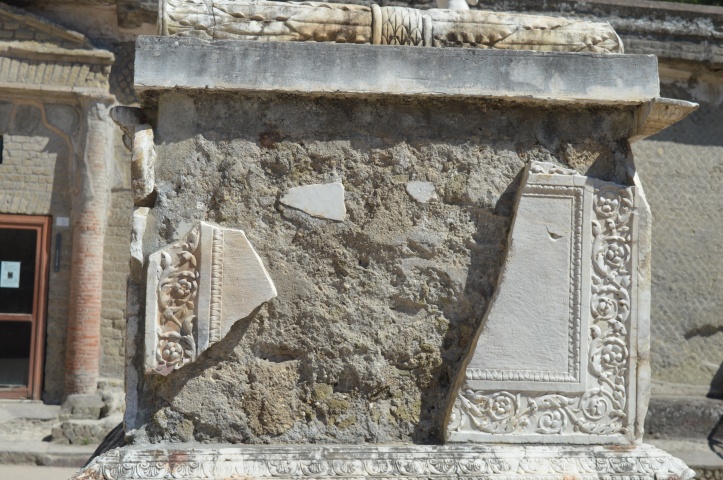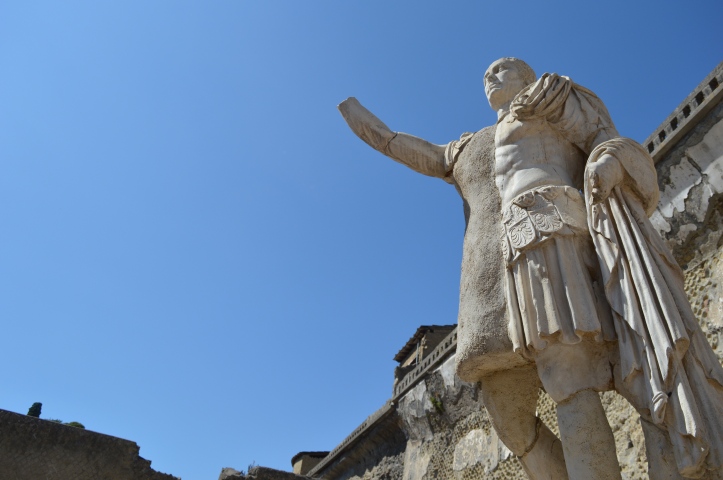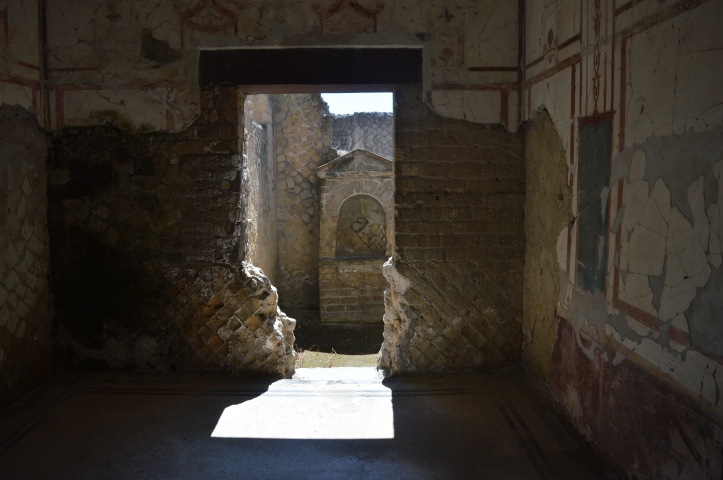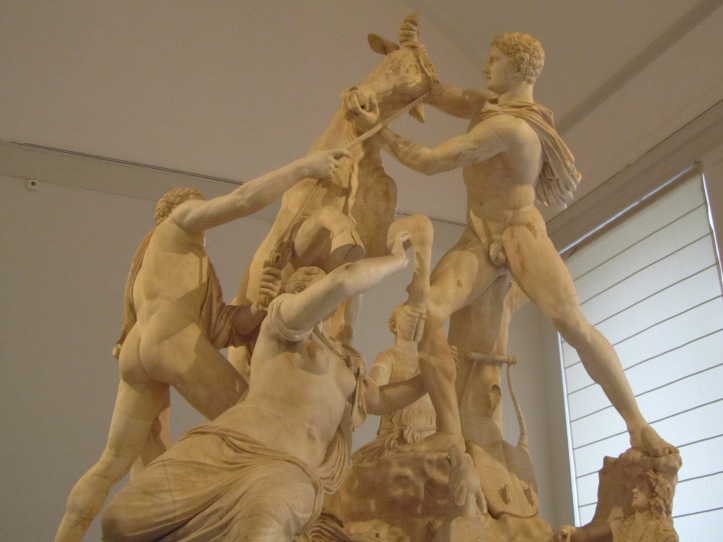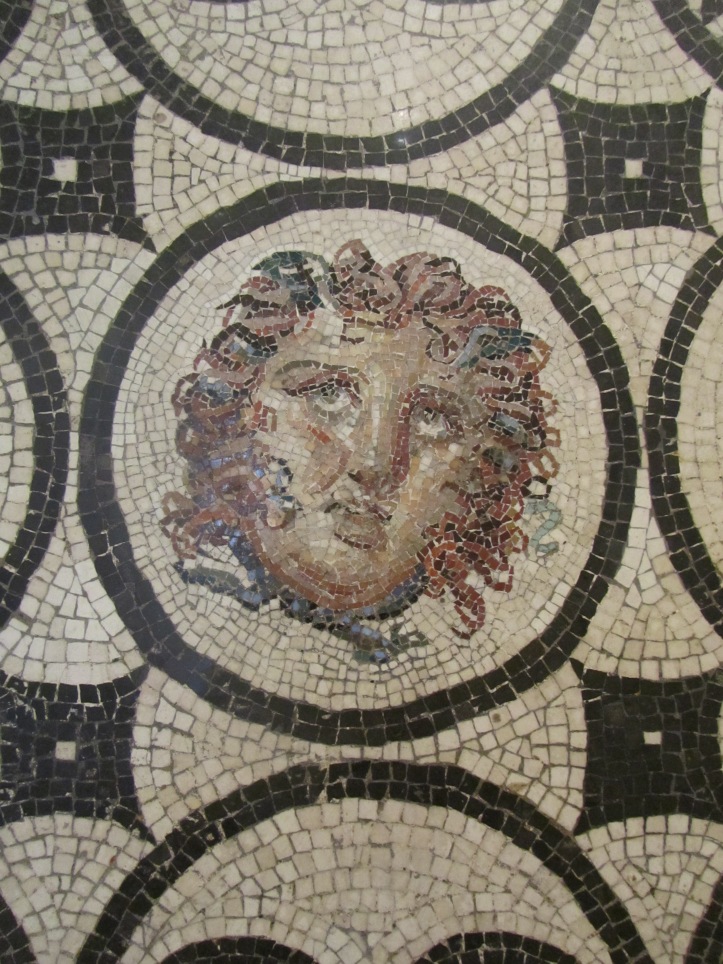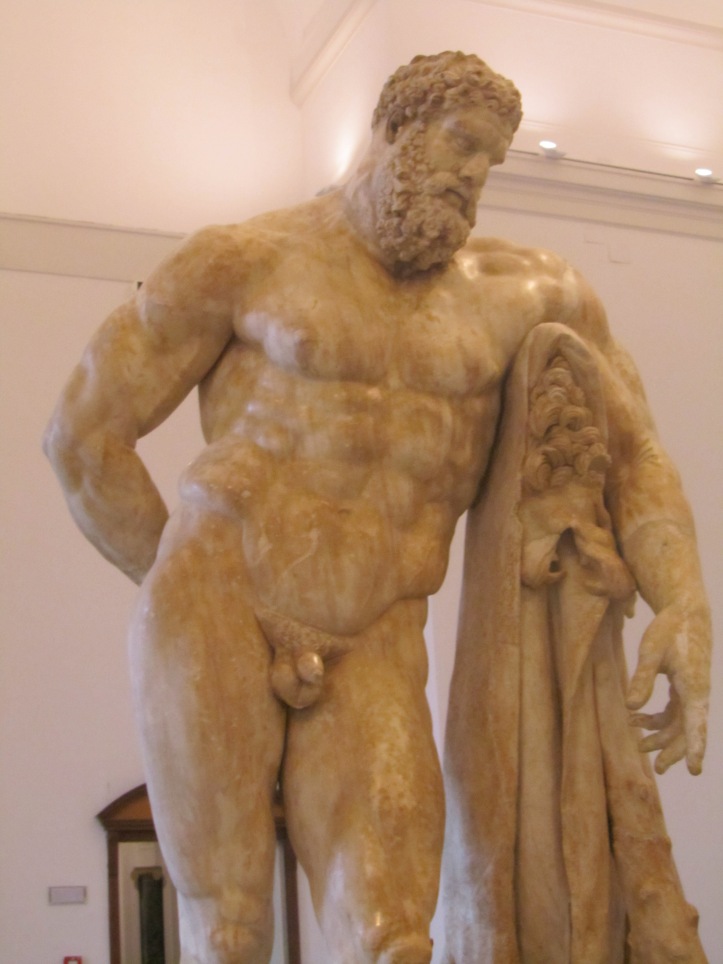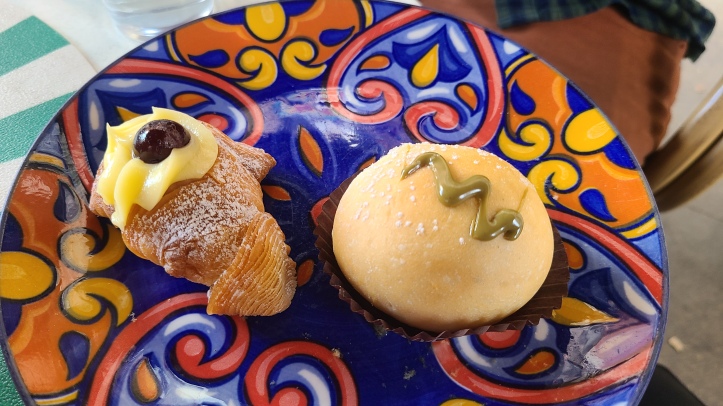Naples is an exciting metropolitan city, with a history spanning some 3,000 years. As the third biggest city in Italy, it has earned somewhat of a “love it or hate it” reputation. Its fans celebrate the city’s historical sites, bustling markets and world-class cuisine. Its critics complain that the city is noisy, grungy and chaotic. There’s no denying that Naples is often overlooked by visitors, with many simply passing through it to reach more glamorous destinations on the Amalfi Coast or the nearby islands. I’m a big fan of Naples and think that if you only visit for a few hours – or skip the city entirely – you’re missing out on a truly wonderful place. In this blog post, I’ll share what makes Naples so special and what you should do, see and eat while you’re there. Hopefully you’ll fall in love with Naples too!
Table of Contents
- Wander Through the Historic Centre
- Explore Spaccanapli and Quartieri Spagnoli
- Marvel at the ancient ruins of Pompeii
- Be awestruck by Herculaneum
- Eat as much pizza as you can
- Explore the city’s other neighbourhoods
- Discover the Naples National Archaeological Museum
- Sample Naples’ street food
- Visit Naples’ remarkable churches
- Glam it up on the Amalfi Coast
- Climb Mount Vesuvius
- Visit the coastal town Pozzuoli
- Experience traditional Neapolitan cuisine
- Take a stroll along the waterfront
- Explore Underground Naples
- Getting around the city
- Is Naples safe?
Disclaimer: This post contains affiliate links, which means that I may earn a commission if you make a purchase by clicking a link (at no extra cost to you). This helps to keep the blog running and growing, with lots of free content for you to enjoy.
Wander Through the Historic Centre
Naples’ historic centre (centro historico) is a treasure trove of beautiful churches, monuments and notable buildings. The whole centro historico has been granted UNESCO World Heritage site and highlights include Duomo di Napoli (the Cathedral) dedicated to the city’s patron saint San Gennaro. This building is stunning on the inside and the out; the facade is built in a neo-Gothic style and the interior filled with magnificent artwork, mosaics, artefacts and sculptures. Beneath the cathedral you will find the crypt and bones of San Gennaro. The main cathedral is free to enter, but there is a small baptistry that you can visit for just a couple of euros. Remember to dress modestly, covering your chest, knees and shoulders, as it is a religious site.
After visiting the Duomo, spend some hours aimlessly exploring on foot, wandering off the streets into the open courtyards and down side alleys. One of the quirkiest streets in the historic centre is Via San Gregorio Armeno, famous for its artisanal presepi (nativity figures and scenes). The shops on this charming little lane are open all year round, selling colourful and creative handcrafted nativity scenes. The tradition dates back to when handmade terracotta figurines were offered to the Roman Goddess Ceres. Nowadays, they have changed from religious offerings to popular collection items and unique souvenirs. You can find all kinds of religious figures, well-known footballers and politicians, and everyday folk like butchers, bakers and dancers.
Once you’ve finished exploring the centro historico, walk down towards the coast past landmarks such as Galleria Umberto I (a 19th-century shopping gallery with a stunning glass ceiling), Castel Nuovo (a medieval fortress open to the public), Piazza del Plebiscito (one of the largest piazzas in Naples) and the elegant Palazzo Salerno. Make the time to go inside the grand halls and lavishly decorated rooms of Palazzo Reale (Royal Palace of Naples) for a glimpse into the opulent lifestyle of the Bourbon kings. The historic buildings and monuments in the centre are impressive to look at, but to get more background information and context about what you’re looking at during your strolls, I really recommend the free walking tour by Rick Steves. It’s free to download onto your smartphone and gives a brief but really interesting overview of the main sights. Alternatively, you can book a guided walking tour; Origins, Cults, and Legends History Walking Tour and Historic City Center Guided Walking Tour both have excellent reviews and are a great way to support local guides. If you’re a fan of street art like me, maybe Historical and Street Art Walking Tour of Naples is just what you’re looking for!
Explore Spaccanapli and Quartieri Spagnoli
Spaccanapoli translates as “Naples splitter”, and true to its name, it’s a long street which cuts right through the historic centre, full of shops, cafes and restaurants. You won’t find a specific road called “Via Spaccanapoli”; it is actually a series of roads linked together, starting at Piazza Gesù Nuovo and continuing horizontally along Via Benedetto Croce, Via S. Biagio dei Librai and Via Vicaria Vecchia. You’ll likely zigzag across Spaccanapoli many times while sightseeing in the historic centre.
Close to Spaccanapoli you can find the atmospheric Quartieri Spagnoli (the Spanish quarter). Formerly where the Spanish were garrisoned centuries ago, this lively neighbourhood is known for its narrow streets, colourful street art, and local markets. It’s the perfect place to experience in the daily rhythms and energy of the city. Bikes whizz past (sometimes with whole families on board), freshly-washed clothes hang overhead drying in the hot Neapolitan sun and the city’s love of its local football team – SSC Napoli – is proudly displayed, with flags, murals, and scarfs decorating almost every square inch of this neighbourhood. There are even religious shrines to the legendary footballer Diego Maradona, who is adored by SSC Napoli fans.
Marvel at the ancient ruins of Pompeii
A trip to Naples isn’t complete without visiting the world-famous archaeological site of Pompeii. Buried and lost for centuries after a devastating eruption of Mount Vesuvius in AD 79, nowadays you can walk along the stone-paved streets of a city frozen in time. Wander around well-preserved homes, public bathhouses, amphitheatres and temples, marvelling at beautifully-preserved frescoes and artefacts that have survived for centuries. You can learn about what life was like in Pompeii before the eruption, and visit the city’s ‘seedier’ establishments (with raunchy graffiti dating by thousands of years). You can even come face-to-face with skeletons of some of the former residents of Pompeii in somewhat morbid (but incredibly fascinating) exhibitions.
A day trip to Pompeii will take you around 5 hours in total (including travel time). The excavation is a short 17.3 miles (28 km) from Naples, and there’s a train connecting the two. The cheapest way to get there is via the local Circumvesuviana train from Napoli Centrale (Naples central station). It takes around 40 minutes and is a short train with very few carriages, so it can become jampacked, especially in the summer and at weekends. Unless you’re very lucky, you might be standing for the whole journey. A more comfortable option is to travel via Trenitalia’s regional train, which also departs from Napoli Centrale.
It’s a good idea to pre-book your entrance ticket here so you don’t have to queue at the entrance. There are different ticket options, depending on if you want to use a guide or not. Well-rated guided tours include Pompeii Ruins & Mount Vesuvius Day Tour, Pompeii Small-Group Tour with Archeologist Guide and Pompeii Entry Ticket and Guided Tour with an Archaeologist. If you want to visit independently, you have two ticket options – €22 and €18 (concessions available). I recommend getting the more expensive ticket, as it includes access to the Villa of the Mysteries, Villa of Diomedes and Villa Regina which are really beautiful and contain spectacular paintings, mosaics, and frescoes.
Top Tip: Bring your own lunch, snacks and water with you. There’s only one cafe in the grounds; it’s expensive and always has an enormous queue.
Be awestruck by Herculaneum
If you don’t have the time to visit Pompeii, the UNESCO World Heritage site of Herculaneum is a great alternative. Located just 11km from Naples, Herculaneum was a seaside resort for the Roman elite that was engulfed in volcanic ash following the same tragic eruption in 79 AD. Herculaneum is significantly smaller and more compact than Pompeii, and much better preserved as it is further away from Mount Vesuvius. Some of the ancient Roman houses here still have their original wooden roofs, doors and balconies two millennia later! There’s so much history to absorb here, and you really feel like you’re stepping back in time.
To reach Herculaneum, take the Circumvesuviana train to the Herculaneum stop (Ercolano Scavi). Many people just buy their tickets on arrival, but if you’d like to pre-book here is the official site for buying tickets, checking opening times and seeing what concessions are available. To enhance your visit and learn more about what life was like in Herculaneum, you could join a guided tour like Herculaneum 2-Hour Private Guided Tour, Pompeii & Herculaneum with Archaeologist Guide or Herculaneum: Skip-the-Line Tour with Archaeologist.
Eat as much pizza as you can

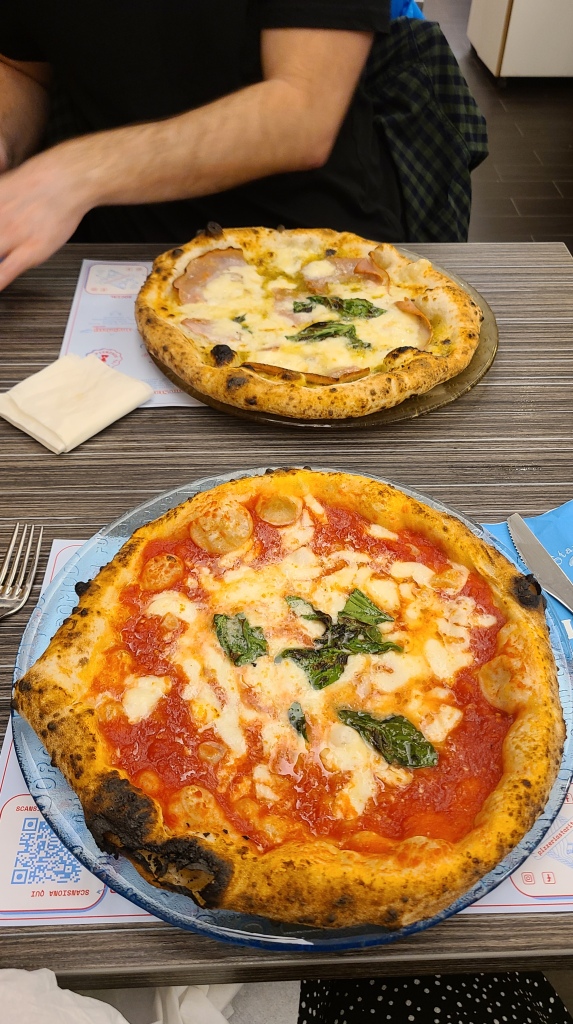
Perhaps the biggest draw to Naples is the chance to try the world’s best pizza. That’s right, the world’s best! Neapolitan pizza is beautifully airy, chewy, with a thick doughy crust with a slightly charred edge. It just can’t be replicated elsewhere because it’s the local ingredients that make it so damn tasty. San Marzano tomatoes, Bufala mozzarella, basil, and olive oil all come from the Campania region of Italy. The two most famous types are Pizza Margherita (the perfect union of tomatoes, mozzarella cheese, fresh basil and extra-virgin olive oil) and Pizza Marinara (topped with tomatoes, garlic, oregano, and extra-virgin olive oil, but no cheese).
The most famous pizzerias in Naples are L’Antica Pizzeria da Michele, di Matteo or Sorbillo. While delicious, these iconic three have become victims of their own success with enormous queues stretching down the street. Other pizzerias I can wholeheartedly recommend (without the crazy queues) include Starita (get the mortadella and pistachio with smoked provola – one of the best pizzas I have ever had), Pizzeria Da Attilio and Diego Vitagliano (recently voted the best in Italy!). Be sure to try a pizza fritta too while in Naples. Yep, that’s a deep-fried stuffed pizza. Don’t worry, calories don’t exist when you’re on holiday (right!?). Pizza fritta can be picked up at any number of take out shops, or at restaurants like 1947 Pizza Fritta Napoli if you want to sit down.
Explore the city’s other neighbourhoods
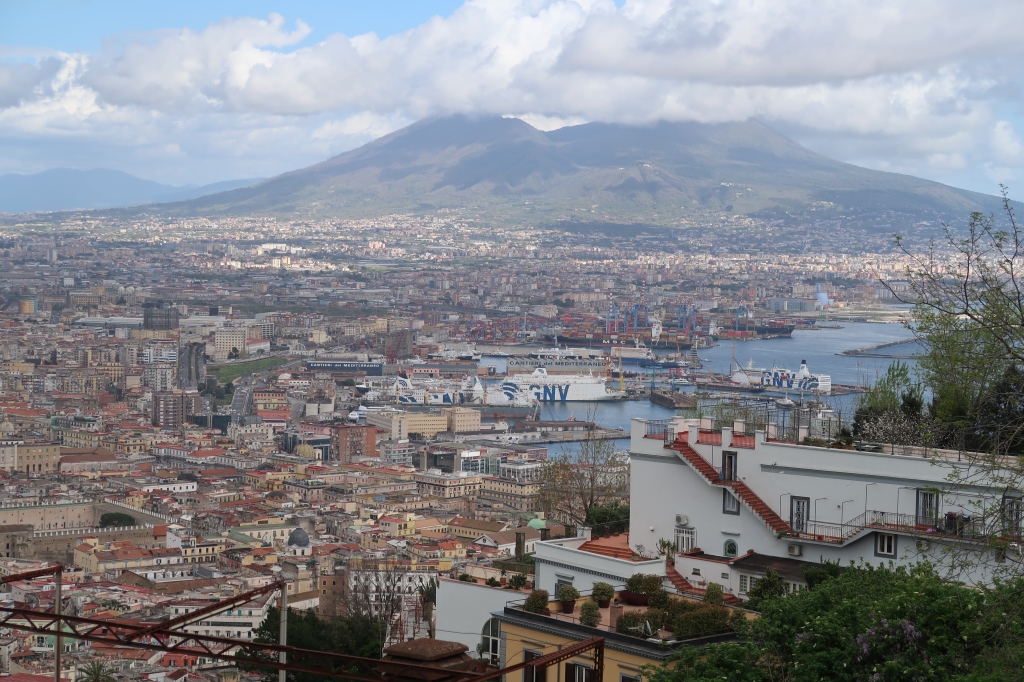
One of my favourite things about Naples is how the different areas of the city have their own distinct character, which makes Naples feel really diverse. Take the funicular to Vomero, a hilltop neighbourhood crowned by the Certosa di San Martino former monastery and imposing citadel Castel Sant’Elmo. You’ll find the best views of the city, the Bay of Naples and Mount Vesuvius here!
North of the city you’ll find Museo di Capodimonte (Capodimonte Museum), located in a former palace atop a hill overlooking the city. This museum houses an impressive collection of art, including works by Caravaggio, Raphael and Titian. Less than ten minutes from the Capodimonte Museum is Catacombs of San Gennaro, an underground Christian cemetery built in the 2nd & 4th centuries. Do a guided tour to get a fascinating glimpse into the city’s past (pre-booking online advised as they cap numbers). Your guide will share interesting insights into early Christian history and burial practices, show you some of the oldest Christian frescoes in Europe, and shares some legends and superstitions about San Gennaro, the protector of the city.
Discover the Naples National Archaeological Museum
Naples is home to the world-class Museo Archeologico Nazionale di Napoli (National Archaeological Museum. You’ll be blown away by its vast collection of Roman and Greek artefacts, including hundreds of items unearthed at Pompeii and Herculaneum. Rick Steves does an excellent free guided tour of the museum, which draws your attention to the museum’s main artefacts and highlights. Don’t miss the Farnese Hercules statue, the wonderfully intricate mosaics, or the Secret Room dedicated to the Ancient Romans’ love of all things sexual. This collection contains more phallus-shaped objects than you can count, along with pornographic mosaics and suggestive sculptures (perhaps not an exhibition to visit with conservative relatives!).
Entrance to Naples National Archaeological Museum is expensive compared to most European museums (Full price tickets: €22, concessions available) but you can use the same ticket to visit twice over two consecutive days.
Sample Naples’ street food
Food is such a core part of Neapolitan identity; you will quickly notice that the locals seem to be constantly snacking and grazing. Make it your mission to try some of Naples’ delicious street food while you’re there. You will discover all manner of delightful treats from local pastries like sfogliatetta (a flaky pastry filled with ricotta cheese and custard), boozy rum baba (a sponge cake soaked in rum). Some of the city’s most well-rated bakeries and pasticcerie include Scaturchio, Pintauro, Attanasio and Carraturo.
If you’re craving something savoury, look for food vendors selling cuoppo. These are paper cones stuffed with fried seafood or vegetables, including calamari, shrimp, anchovies, and sometimes zucchini flowers. I recommend the cuoppo at Pescaria Azzura where you can choose from a range of fried fillings. Other popular fried snacks include Frittatine di Pasta (deep-fried pasta fritter made with béchamel sauce, peas, ham, and cheese) – make a beeline for Isabella De Cham Pizza Fritta to try their particularly delicious fritti!
Personally, I am perfectly happy wandering around Naples snacking on whatever tempts me, but if you’d like some guidance and recommendations, why not join a street food walking tour? Guided Street Food Tour with Tastings, Street Food Walking Tour with Local Guide and Naples Food Tour with Davide all have excellent reviews and are a great way to learn about Neapolitan food culture.
Visit Naples’ remarkable churches

Italy is well known for its eye-catching, ornate churches and cathedrals, and there are many of these to be found in Naples. We’ve already mentioned the Duomo (Cathedral), but don’t skip smaller churches like Chiesa del Gesù Nuovo, Santa Chiara Monastery and San Domenico Maggiore. There’s so much history to be learned from these historic buildings, and they’re a cool, calm refuge from the hustle and bustle of the city.
Most religious buildings are free to enter in Naples, but there’s an €8 euros admission charge for Sansevero Chapel. That’s because you can find the “Veiled Christ” sculpture here, a Renaissance sculpture of Jesus covered in a thin shroud, cut from the same piece of marble. The above picture can’t even do it justice; it is simply mind-blowing how detailed the statue is and how realistic the figure and ‘layers of fabric’ are. To learn more about this extraordinary piece of art, consider joining a guided tour like Old Town and Veiled Christ Tour.
Glam it up on the Amalfi Coast
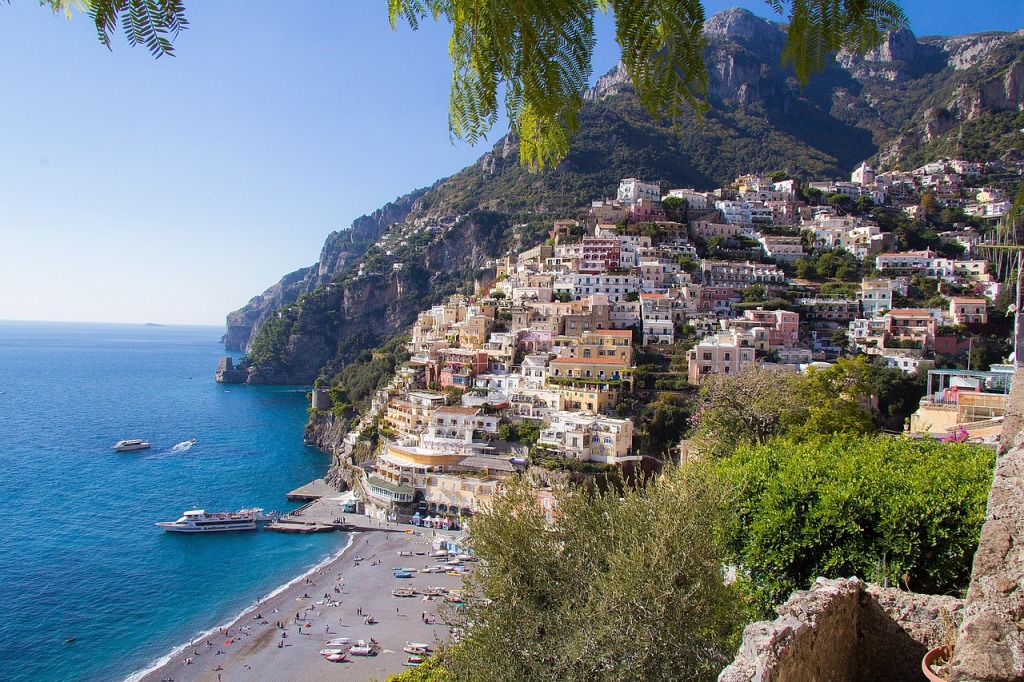
One of the most popular day trips from Naples is to the gorgeous Amalfi Coast. With its stunning views, crystal clear waters and amazing food, the Amalfi Coast is a magnet for those looking to enjoy la dolce vita. You can get there by catching the train or ferry from Naples to Sorrento. You can either spend your day there, or catch a bus to other picture-perfect towns along the Amalfi Coast, like Positano, Amalfi or Ravello. If you’d like to join an organized tour Amalfi Coast Full-Day Trip, Sorrento, Positano, and Amalfi tour and Boat Tour to Positano, Amalfi and Ravello all sound positively dreamlike!
Alternatively, take a ferry to the island Capri to enjoy its beautiful beaches, luxury shops, and the famous Blue Grotto. Here are some well-rated tours to consider: Gulf of Naples & Capri Sightseeing Boat Tour, Capri and Blue Grotto Day Tour and Island of Capri Full-Day Tour with Lunch.
Climb Mount Vesuvius
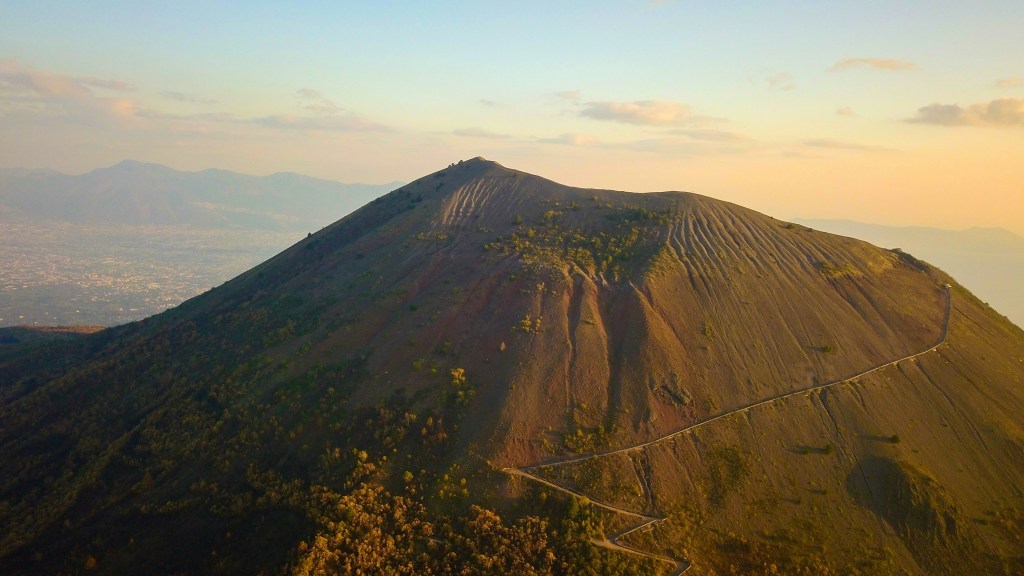
Seeing Mount Vesuvius from a distance is spectacular enough, but for those of you who to get up close and personal with the world’s most famous volcano, consider trekking up it for incredible views from the crater’s edge. This exciting hike can be easily combined with a day trip to Pompeii, as buses regularly run between the archaeological site and the base of the volcano. Alternatively, book a guided tour that combines both such as Pompeii Ruins & Mount Vesuvius Day Tour, Pompeii and Mt. Vesuvius with Lunch and Wine Tasting or Full-Day Pompeii and Mount Vesuvius Tour (from Naples or Sorrento). Always check ahead on the day of your visit to check it’s safe to climb; Vesuvius is still an active volcano and can be off-limits if there is seismic activity.
Visit the coastal town Pozzuoli

Naples can be a bit overwhelming at times, so for a change of pace, head west to the peaceful port town of Pozzuoli. Located on the Bay of Pozzuoli, this seaside town is a great place to while away a few hours, taking a stroll along the waterfront, exploring the pretty side streets, and eating a delicious seafood lunch at a local trattoria like La Pulperia (their seafood pasta dishes are incredible!). There are also ancient ruins to explore here, like the impressive Anfiteatro Flavio Neroniano, the third-largest of its kind in Italy. You can also catch a ferry from here to the nearby islands of Procida or Ischia.
Pozzuoli is located around 30 mins from central Naples and can be easily reached by Metro Line 2 (from Napoli Centrale, Piazza Garibaldi, or Montesanto station), or the Cumana Railway (from Montesanto station).
Experience traditional Neapolitan cuisine
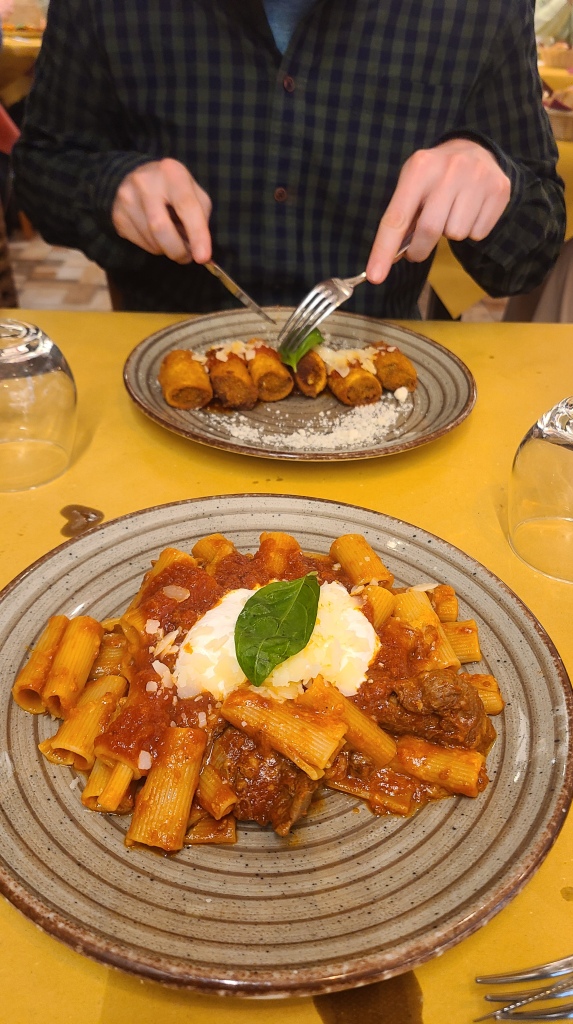
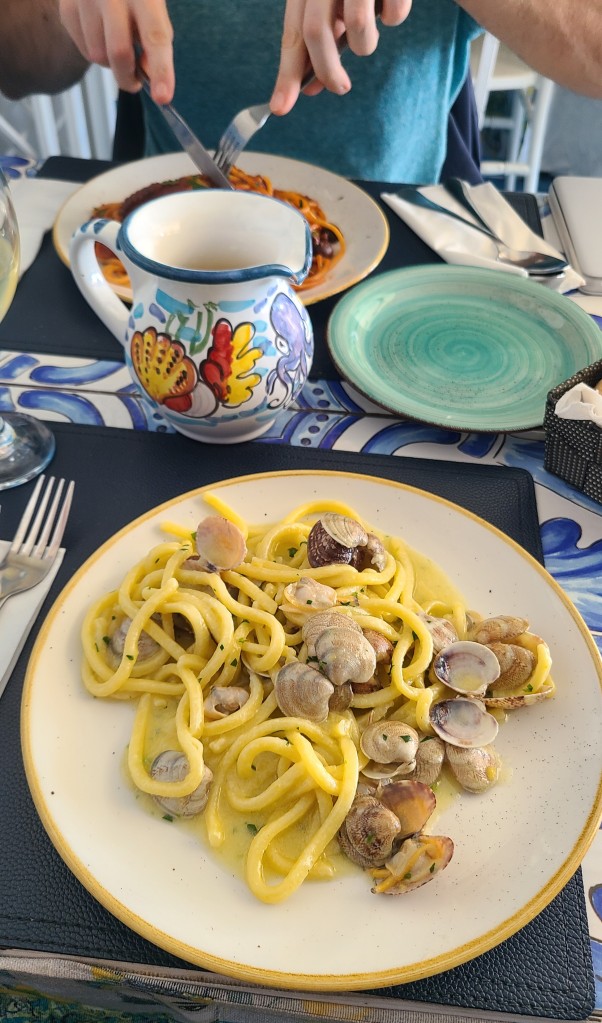
You could dine out in Naples every day for a year and not get bored of the delicious Neapolitan cuisine. While pizza is of course the main attraction in Naples, you would be foolish to not sample some of the other wonderful dishes the city is known for, such as:
- Spaghetti alle vongole – A classic Neapolitan pasta dish of spaghetti with clams, garlic, parsley, and a touch of chilli flakes. It’s a taste of the sea in every bite!
- Ragu Genovese – A flavourful pasta dish of slow-cooked onions and beef (not actually from Genoa, Italy).
- Ragù Napoletano – A slow-cooked meat sauce served with pasta. It’s rich, savoury, and deeply satisfying.
- Pasta alla Luciana – A rich, flavoursome pasta dish of baby octopus and tomato sauce.
- Pasta e Fagioli – A hearty Neapolitan stew featuring pasta and beans cooked in a tasty broth. Comfort food at its best!
- Pesce Crudo – Raw fish marinated in lemon juice, olive oil, and herbs. Simple, yet bursting with flavour.
Take a stroll along the waterfront

Neapolitans love a good stroll (known as la passeggiata) so why not join them? Walk along the picturesque Lungomare waterfront and take in the stunning views of the Bay of Naples. This promenade is a great place to mingle with the locals whilst burning off some of the delicious fried food you’ve been enjoying. There are plenty of bars and restaurants here, or you can simply perch on one of the walls overlooking the sea, listening to the waves crash against the rocks with mighty Mount Vesuvius in the distance.
Close to the Lungomare promenade is the adorably-named Castel dell’Ovo (Egg castle). It is the oldest castle in Naples, and its name comes from a legend about a magical egg that supports the castle’s foundations. At the time of writing, it is closed to the public but hopefully it’ll reopen in time for your visit, so you can roam around the historic halls, enjoy panoramic views from the castle walls and search for that magic egg!
Explore Underground Naples
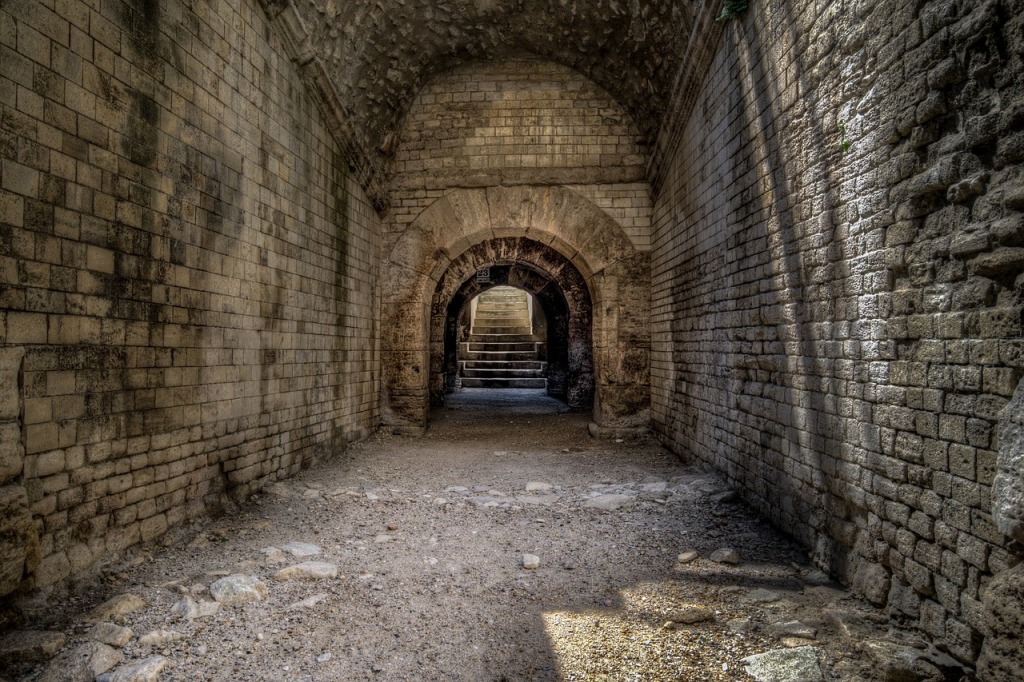
Underground Naples (or Napoli Sotterranea) offers a fascinating journey beneath the bustling streets of the city to discover a hidden world. This subterranean labyrinth, dating back over 2,400 years, reveals layers of Greek and Roman structures, early Christian burial sites, and World War II air raid shelters. Join a guided tour to be led along narrow tunnels and through expansive caverns, stumbling upon remnants of Naples’ past ruins such as a Greco-Roman theatre, cisterns and aqueducts. Napoli Sotterranea provides a unique perspective on the architectural ingenuity of past civilisations and the resilience of Neapolitan culture through the ages.
Getting around the city
Walking is the best way to explore Naples, but there is also a very good metro system that connects you with most of the main sights. Tickets are well priced too, at around €1.20 (for a 90-minute journey). You can also pay with contactless payment now, which is a real timesaver during peak times when the stations are crowded. Remember to always tap out with your contactless card! You can read more about Naples’ public transport tickets and offers here.
Is Naples safe?
The city has a reputation for being really unsafe but it is mainly fueled by stereotypes. Is there crime there? Of course! However there are also millions of people living and travelling there every day without any issues. I personally have never felt unsafe there, and believe that if you practise the usual common sense and awareness you do in other big cities, you won’t run into any problems. My common sense checklist includes being cautious of pickpockets, especially in crowded areas and on public transport, not leaving my bags or valuables unattended, avoiding poorly lit streets at night and listening to my gut. If something (or someone) looks or feels dodgy, make a swift exit and head somewhere well-lit and well-populated!
I hope this blog post has shown the wide variety of things to do in and around Naples, and what makes this city so captivating. Whether you’re exploring ancient ruins, savouring a slice of pizza or simply soaking in the vibrant street life, I hope your visit to Naples is filled with unforgettable moments. Buon viaggio!
Ciao for now
Izzie, the Curious Sparrow
